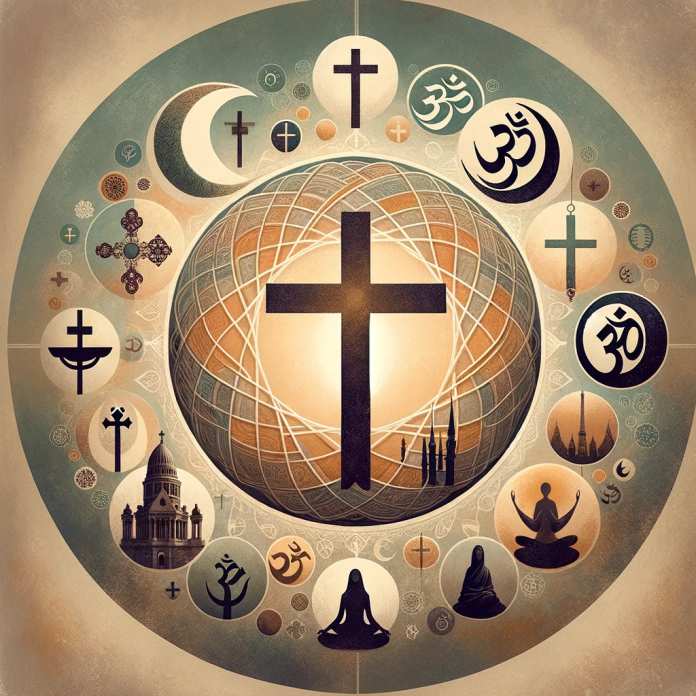Grief, an inevitable part of human existence, is a universal experience that transcends geographical boundaries and cultural divides. However, the way it is understood and processed varies significantly across different religions and cultures. This article delves into the multifaceted nature of grief and how it is interpreted and dealt with in various religious and cultural contexts.
Grief in Christianity
Christianity, with its roots in the teachings of Jesus Christ, has a unique perspective on grief and loss. The religion encourages its followers to mourn and express their sorrow openly, as evidenced in the Bible verse, "Blessed are those who mourn, for they will be comforted" (Matthew 5:4). Christians believe in life after death, and this belief often provides comfort and hope during times of grief.
Funeral rites in Christianity often involve a service at a church, followed by burial. During these ceremonies, prayers and hymns are recited, and eulogies are delivered to honor the deceased. The mourning period varies among different Christian denominations, but it generally involves prayer, reflection, and support from the church community.
Protestant Christianity and Grief
In Protestant Christianity, the focus is on the hope of resurrection. This belief in eternal life helps followers cope with their grief and find solace in the promise of a reunion in the afterlife. The mourning period typically involves a funeral service and a period of bereavement, during which the bereaved are encouraged to express their grief and seek comfort from their faith and community.
Catholic Christianity and Grief
In Catholicism, grief is considered a natural response to loss, and expressing sorrow is encouraged. Catholics believe in purgatory, a state of purification for the souls of the deceased before they enter heaven. Prayers are offered for the deceased during the mourning period, with the belief that these prayers can aid their journey through purgatory. The funeral mass and the rites of committal are central to the Catholic mourning process.
Grief in Islam
In Islam, death is considered a transition from one state of being to another, rather than an end. Muslims believe in life after death and the Day of Judgment, when each individual will be held accountable for their actions in this life. This belief provides a framework for understanding and dealing with grief.
The mourning period in Islam is three days, but widows observe an extended mourning period of four months and ten days. During this time, the bereaved are encouraged to express their grief but also to accept the loss as the will of Allah. Funeral rites include a simple service known as Janazah, followed by burial.
Sunni Islam and Grief
In Sunni Islam, the mourning period is marked by prayer, reflection, and remembering the deceased. The bereaved are encouraged to seek comfort in their faith and community. The Janazah prayer is a collective obligation, and it is performed in a congregation to seek pardon for the deceased and all dead Muslims.
Shia Islam and Grief
Shia Muslims also observe a three-day mourning period, but they have additional commemorations for certain historical events, such as the martyrdom of Imam Hussein. During these times, expressions of grief, such as crying and lamentation, are common. The mourning practices aim to connect the community with their historical and religious roots and provide a space for collective grief.
Grief in Hinduism
Hinduism, with its belief in reincarnation and karma, offers a unique perspective on death and grief. Death is seen as a natural part of the cycle of birth, death, and rebirth, and grief is a normal response to the temporary separation from loved ones.
The mourning period in Hinduism lasts for thirteen days, during which the family performs various rituals to help the soul of the deceased transition to its next life. The bereaved are encouraged to express their grief openly, but they are also reminded of the impermanent nature of life.
Grief in Buddhism
Buddhism views death as a part of the natural cycle of life, death, and rebirth. Grief is acknowledged and expressed, but it is also viewed as a form of attachment that leads to suffering. Buddhists are encouraged to understand the impermanent nature of life and to cultivate detachment.
The mourning period in Buddhism varies among different cultures and traditions. It often involves meditation, chanting, and making merit for the deceased. The bereaved are encouraged to reflect on the nature of life and death and to seek comfort in the teachings of the Buddha.
Grief in Indigenous Cultures
Indigenous cultures around the world have their unique traditions and rituals for dealing with grief. These practices often involve a deep connection with nature, ancestors, and the spiritual world. Grief is not only acknowledged but also shared among the community, providing a collective support system for the bereaved.
While the specific practices vary greatly among different indigenous cultures, common elements often include storytelling, ritualistic dances, and communal mourning. These practices serve to honor the deceased, provide comfort to the bereaved, and restore balance in the community.
Conclusion
Understanding grief in different religions and cultures provides valuable insights into the universal human experience of loss. While the expressions of grief may vary, the underlying emotions are remarkably similar. By exploring these diverse perspectives, we can gain a deeper understanding of grief and find common ground in our shared human experience.


-banner.png)





